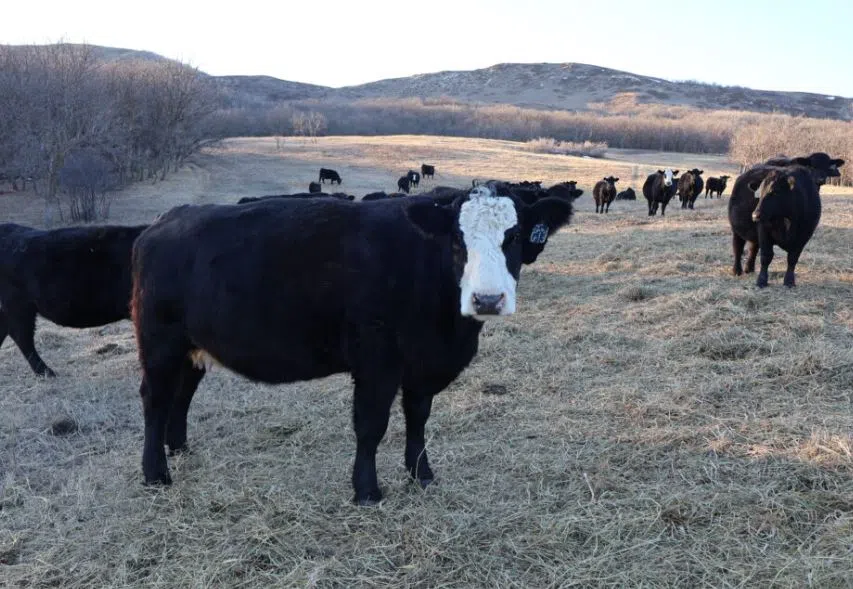
Beef cattle roam in a pasture on Tom Murphy’s ranch near Killdeer, North Dakota, on Feb. 1, 2024. (Jeff Beach/North Dakota Monitor)
KILLDEER, N.D. (North Dakota Monitor) — An advertisement from the cattle company Agridime included the phrase: “We know it sounds too good to be true.”
Despite that, the company was still able to entice investors with the promise of returns of 15% to 20% — even as high as 32% — in the cattle market without having to do any of the work.
The Securities and Exchange Commission took over the assets in December, and a complaint against the company said Agridime diverted tens of millions of dollars in investor funds to make Ponzi scheme payments to prior investors.
The complaint says Agridime owes $191 million to investors in 15 states. About $40 million, or more than 20%, is owed to North Dakota investors, the North Dakota Securities Department said.
So if it sounded too good to be true, how did so many investors get hooked?
In North Dakota, it can be attributed in part to Agridime using a trusted cattle broker as a sales agent.
Taylor Bang of Killdeer had worked with ranchers in North Dakota for years before getting involved with Agridime.
“One hundred percent up and up,” Killdeer beef producer Tom Murphy said of his 20 years of doing business with Bang.
Agridime was incorporated in Texas in 2017. Murphy said he was skeptical of Agridime at first, but neighbors who had invested said Agridime was holding up its end of the deal.
Here was the deal: Invest $2,000 with Agridime, and in 12 months, get a 15% to 20% return. With a $100,000 investment, a 20% profit was guaranteed.
Murphy got pulled in, and after his first contract paid off as promised, he reinvested. But his third contract is due to pay off in May.
“That one isn’t looking so good,” he said.
Murphy said he has benefited from North Dakota’s revitalized oil industry, giving him money to invest that would not have available before. He said other western North Dakota landowners are in the same situation.
Murphy and North Dakota Agriculture Commissioner Doug Goehring both noted that cattle markets have been on the upswing, making the idea of larger-than-usual profit margins seem attainable.
But Murphy admits that the Agridime profit margins seemed high.
“There’s never been 30% profit margin in the history of the cattle market, ever,” he said.
And then there was the Agridime business model.
Agridime worked with feedlots in several states to bring cattle up to market weight but said it had its own meat packing plants in Kansas, Texas and Arizona.
It also had its own distribution system and was marketing its meat as a premium product.
By eliminating some of the steps in getting beef to market — cutting out the middleman — the company told Murphy it could achieve those profits.
“They said they had their own packing facilities and were marketing directly over the internet,” Murphy said. “And they said that’s how come there was such a profit margin.”
Farmers “do feel like the middleman is getting too much, and quite frankly, I get where that mentality comes from,” said Goehring, who is also a beef producer.
“So it’s easy to get lulled into the ‘I’m getting screwed,’” way of thinking, Goehring said.
Consolidation in the industry has left just four large meatpacking companies. Producers complain that the lack of competition hurts producers and benefits the packers.
“The packers make as much money on that calf in 14 days as we do in a year,” Murphy said.
Murphy said he still believes the Agridime model could have succeeded.
“I don’t think it started off as a Ponzi scheme,” Murphy said. “I think it started off as a business they probably could have pulled off.”




Comments